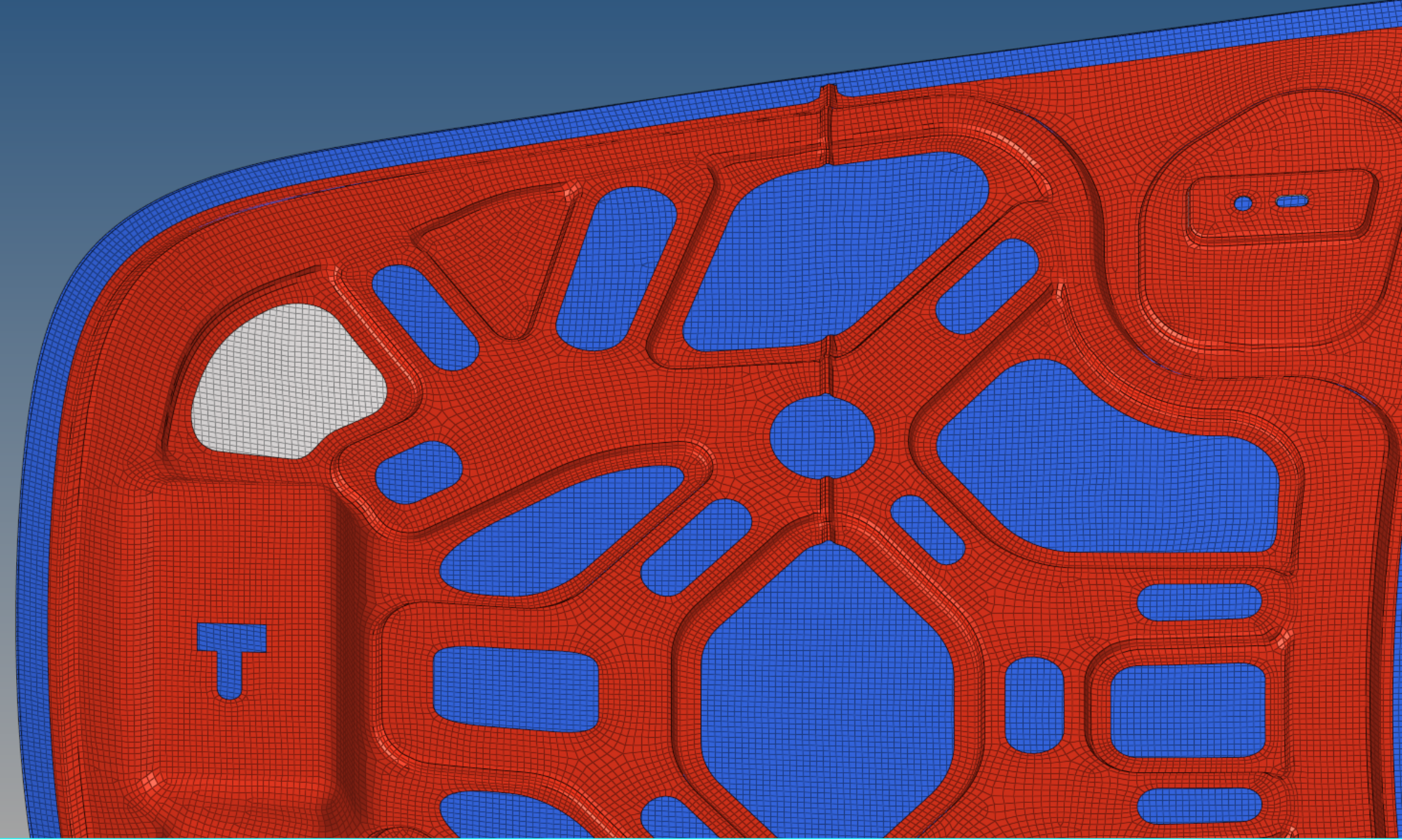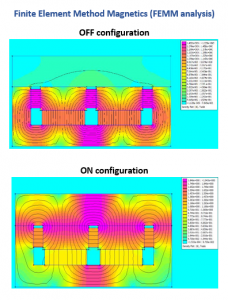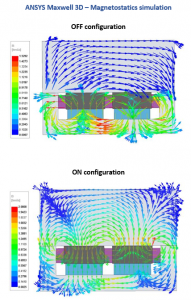Overview:
Electro-permanent magnetic clamps (EPMCs) are used to produce large reluctance force to rigidly clamp ferromagnetic materials without the need for a continuous power supply. In this project, such a clamp was designed and optimized to generate a clamping reluctance force high enough to hold a work piece during machining. The design process was three-pronged:
- A primary 1D Magnetic circuit analysis was carried out in Simulink to reverse-determine the necessary starting dimensions of the required force value.
- An 2D model of the system was created and iteration process was automated by interfaced Matlab with LAU Script from FEMM package.
- The FEMM results were validated using ANSYS Maxwell 3D magnetostatic simulations.
Optimization constraints in design:
- The depth and length of each Pole-pieces (Grade 1020 steel) are 50 mm x 50 mm.
- The two Poles-pieces should be 60 mm apart from their centre.
- The cross sections of the AlNiCo magnets are constrained by the dimensions of the coil bobbins and shall be limited to 46 mm.
- There is air-gap between upper surface of the clamping device and the workpiece of atleast 0.1 mm. Air-gap is a biggest reluctance to the linkage of magnetic flux.
Performance objective:
- A minimum reluctance force (clamping force) of 1500 lbs (approximately 6672 N) has to be applied on the workpiece in the “ON” position (When clamping required) along with a negligible force in “OFF” position (clamping not required).
- Optimization of the dimensions of the steel poles and clamping case, the sizes and grades of the PMs (NdFeB and AlNiCo).
- Limit the flux linkage region to only Clamp body when in 'OFF' state.
- Restrict the saturation of magnetic flux generation to 1.8 Tesla only.
Results attained:
- A clamping force of 6673.7 N in 'ON' & 20.923 N in 'OFF' was met for the final optimum design.
- Suitable AlNiCo & NdFeB grades were found which satisfied the force requirements as well as dimensional objective requirements.
- The design was improved dimensionally by 5.93 % (in volume) when switched from 2D FEMM method to 3D ANSYS Maxwell method.
Finite Element Method Magnetics (FEMM analysis)


